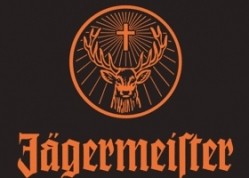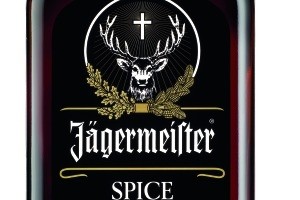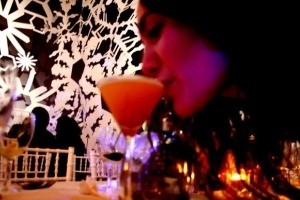The drinks you can't afford to ignore

And here’s another truth, pubs that have not expanded beyond their general repertoire of spirits to stock a decent range of specialities and herbal liqueurs are missing a trick.
Herbal liqueurs, whether sold as shots, bombs or as long mixed drinks – sometimes with Prosecco and soda or ginger beer are big money. Too big to ignore.
And it’s not just the late night spots that are starting to get involved. Rural destination pubs and fine dining gastros are now happily getting amongst it too. The trend is everywhere and can be seen “in lower-tempo outlet types like food-led pubs,” confirms CGA account manager Jamie Campbell.
Time ago, shots were seen as something that suited city pubs and their late night up-tempo image seemed to jar with the more rural retreats. But this is now an outdated way of thinking. The trend for longer drinks and mixable spirits went hand in hand with brand owners hammering away with responsible drinking messages. And, in an effort to show the government that the on-trade was not responsible for binge drinking at a time when a lot of press in the national media was causing damage, long drinks seemed like the way to go to show that alcoholic refreshment had grown up.
But things have changed.
“The popularly of Jägermeister makes it a great product for pubs,” says Toby Brett managing director of independent multiple operator Banwell House which has four pubs in its estate. Brett explains that Jägermeister in particular is “a good product to increase average spend with customers as an additional drink” adding that “Jägerbombs and Jägermeister shots are high margin and easy to dispense.”
Brett also observes that herbal liqueurs “sell well in all pubs whether urban or rural” and admits he is a convert. “More sales = more profit = great for business,” he reminds.
Last year, Jägermeister marked the start of its first ever campaign ‘It Runs Deep’ and its owner Cellar Trends spent millions in generating interest among its target 25-35 year old audience. In many ways, the German hunting liqueur, made with 56 natural ingredients from across the world decanted in a dark edgy bottle with a stag label, was already fairly cool and enigmatic and its popularity was soaring in many a good music venue.
A second wave of activity in February began to further boost its reputation with music link ups at festivals and orange and black clad army of attractive funseekers actively getting the party started by immersing themselves in many a bar and introducing people to the drink. Image conscious gig-goers can be a tough crowd, but Jägermeister has become an instant cult hit and never looks like it’s trying too hard, which appeals enormously. This year, Cellar Trends will be launching a new “deep freeze activation” for Jägermeister and we really see the herbal liqueur come into its own as ice cold shots become the order of the day
“The speciality spirit market, which includes herbal liqueurs, offers licensees one of the biggest sales opportunity within the on-trade as it is currently growing the spirits category by a substantial 11.4% year-on-year,” says Nicole Goodwin, Jägermeister UK group marketing manager. Goodwin reminds that Jägermeister is “one of the few alcohol brands to be requested by name” which makes it “a category of its own”.
But there is one form of serve that energy drink owners and Jägermeister have been careful not to endorse, yet it is one of the main bar cries heard when the drink is requested. Sales of Jagerbombs [a shot of Jagermeister submerged in a glass of energy drink] have increased sales of the brand.
Gavin George, managing director of InnBrighton, a group of 56 pubs predominantly in the South East, says that “sales of Jägermeister outstrip those of other products in the category by a country mile. This is, of course, as a direct result of the success of the Jagerbomb, which remains very popular in our Brighton venues, with a wide range of age and economic profiles.”
George describes it as “an accepted part of a fun night out” and hints to other operators that “the breadth of its appeal suggests there is no more stigma attached to it than to any other shot”.
George points out that InnBrighton “sold very little Jagermeister before the advent of the bomb,” but that it’s only really “a tricky conundrum for the brand owners and perhaps even for the energy drink makers, given both must enjoy the volume and profile but perhaps less the symbiotic nature of the relationship”. He sees no reason why pubs should reject the serve however. “We certainly enjoy the volume, and so Jägermeister will continue as a part of our product portfolio because it meets customer need,” he adds.
Steven Ceates, owner of The Shed in Annan, Dumfriesshire explains that sales of the herbal liqueur at his pub have increased since he invested in a tap machine.
“We have had a Jägermeister Tap Machine for almost six years now. When the machine was installed, we saw an immediate increase in sales from 1-2 bottles being sold a week, to 12 bottles plus and this has remained consistent over years. This is the best thing I have ever purchased for the bar.”
But it’s not just Jägermeister enjoying the high of the trend for herbal liqueurs, according to Global Brands marketing director, Simon Green, “Jungfrau is now the second biggest and the fastest growing herbal liqueur in the UK on trade and recently won a Silver Medal for quality in the 2013 International Spirits Challenge.”
Sourced from Europe’s leading Krauter Liquor distillery, Jungfrau has been a hit with its 18 to 24 year old target market who look for great tasting new brands, and also with licensees, thanks to the preferential GP potential.
“Jungfrau is currently seeing volume growth of +171% because of its fantastic distribution across key on trade operators, and it has been outselling vodka in some of the leading Student Union venues,” says Green, adding that this year it has begun “supporting Jungfrau in-outlet with premium, bespoke PoS, including the new Jungfrau mountain glorifiers, which enhance back bar visibility and bring the brand to life.” Green says that, despite communicating directly with its target consumers via digital media, it would encourage licensees to “get creative with their drinks menus, back bar displays and chalkboard offers, as these forms of PoS can influence up to a quarter of all drinks purchases.”
It’s from trends like the recent one for Aperol Spritz, which is a mix of 2 parts Aperol [a lighter less alcoholic blend of Campari], 3 parts Prosecco and 1 part soda water served over ice garnished with a slice of orange, that have really seen herbal blends [Aperol contains orange, gentian, rhubarb and cinchona], carving out a successful path as a long mixed drink.
While the likes of Tuaca, [a liqueur with a brandy base with essence of orange and vanilla] which is usually served as a chilled shot, is only just starting to gain traction among the UK on-trade beyond Brighton.
There’s still, arguably, a long way to go. But the brands are flourishing; illustrating that interest ‘something a bit different’ is alive and well. If you’re not stocking any of them, it may be an experiment you’d like to take up.
Then, next time you’re asked what’s available you needn’t hang your head in shame. Instead, you’ll be able to say: “Ever tried this?”






